The View From the Hill 4th November 2023
After 10 years of not missing a month, here we are with a two month hole in the record. Humble apologies to any disappointed readers, hoping to make up for it this time. There’s been too much going on to find the time to sit down and reflect on what we’ve been up to.

A kind friend sent this across this morning, from a corner of the farm next to Field Grove wood, it rather sums up the wild weather fluctuations we’ve seen lately, the occasional beautiful sunny hour interspersed with endless rain. 172mm in October is far from a record here, although the average for this the wettest month of the year is 126mm, 10 years in the last 38 have seen more than this month’s total, maxxing out at 251mm in 2000.
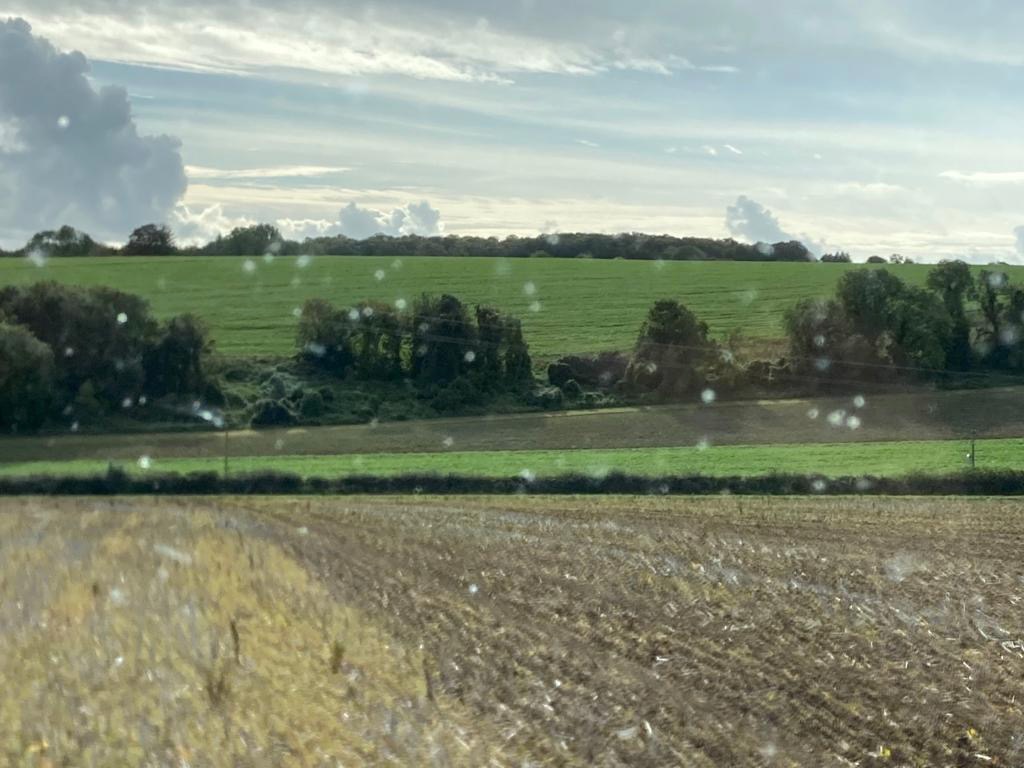
The rain has rendered autumn sowing a little challenging. Holding off as long as we dare to reduce the risk of aphids infecting our crops with barley yellow dwarf virus (it affects wheat too), runs the risk of autumnal rain settling in and making good seedbed days hard to find. Luckily the drilling team threw in some long hours on the good days and got the job wrapped up in the rain on Oct 25th. It would have been a different story had we not been direct drilling. Previously cultivated seedbeds do not dry out anything like as quickly as those that have not been touched by machines. The worm holes and airways in the soil remain intact and it is amazing how quickly many soils drain down after rain.
Working against the direct drilling model however, is the underlying slug burden, especially in fields that grew oilseed rape the previous year. Cultivations can disrupt the slug lifestyle, damage their eggs and reduce the ability of the slimy devils to move through the soil, whereas direct drilling does not, and in a wet year like this we are seeing a slug fest in the wheat following rape. Slug pellets (now ferric phosphate based, the nasty ones have all been banned) are in short supply, and timing is difficult. Based on yesterday’s forecast we took a punt and spread many hectares with a dose yesterday, hoping for a good kill overnight before today’s rain arrived and washed the uneaten pellets away. Waking up this morning to the sound of rain already on the roof was annoying to say the least, soggy pellets are not attractive to slugs and therefore useless as they wash into the soil. The slugs will continue to paddle around nibbling off newly emerged seedlings while we look on helplessly.
We are assured by our regenerative friends that as soils get healthier, slug-predating ground beetle numbers will build as we disturb the soil less and apply fewer harmful chemicals, our in-field wild flower strips should also act as reservoirs for other potential slug predators, but when we can expect to go slug pellet free is currently anyone’s guess.
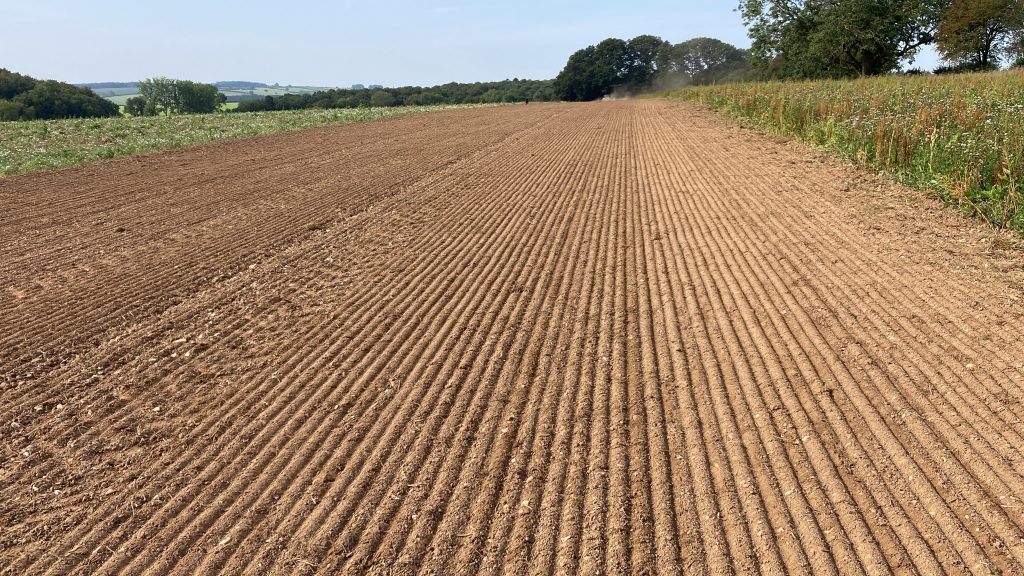
Here is a good old fashioned seedbed, (from dry mid September), over-worked and consequently vulnerable to run-off and capping due to heavy rain events, it’s like a pudding now. This is the second time we have tried to establish an AB15 mix on the headlands of a handful of fields. To those not familiar with Countryside Stewardship options, this one is a 2 year legume fallow, intended to help farmers get on top of troublesome grass weeds. The rules state that we must mow off the foliage several times during the two years, to prevent seeding of weed grasses like blackgrass or brome, and also to ensure that we do not benefit some other area of our business by for example making hay out of it for our animals. Defra are determined that in rewarding us for one thing, we should not be able to benefit from it in any other way other than that which they intend.
The reason we overcooked the seedbed here is that when we first tried to establish this mixture of vetch and clovers in 2022, it did not emerge and grow at all well, so fear of being penalised at an inspection made us try again. Whereas first time round we direct drilled it, which we now feel is not the best way to establish small seeded crops like clover, this time we went to town, first with the Sumo cultivator, which cultivates quite deep, then the discs to create a good tilth, followed by drilling with the old Vaderstad Rapide drill, which further breaks up the soil as well as firming the ground and placing the seeds. Topped off with the ring rolls, the whole intention was to create good seed to soil contact, to optimise the chances of a speedy and even germination. The result however reminds us why we now try to direct drill wherever we can, this clay cap soil can run together when wet, and capping can prevent seedling emergence, not only that, it will turn to a pudding and dry out only slowly, because the cultivations have destroyed the worm holes and natural fissures between undisturbed soil particles which allow water and air to percolate through the soil, keeping it aerated and free draining. Ploughing has the same effect of damaging soil structure, to a greater depth than simply cultivating, and which can take a whole season and more to recover from. Small seeded crops are much trickier to establish than larger ones like cereals and beans. Getting the conditions right and judging the right amount of cultivation to suit them is a big challenge. Even after all that work, sadly the germination of the clovers in the mix has not been particularly good.
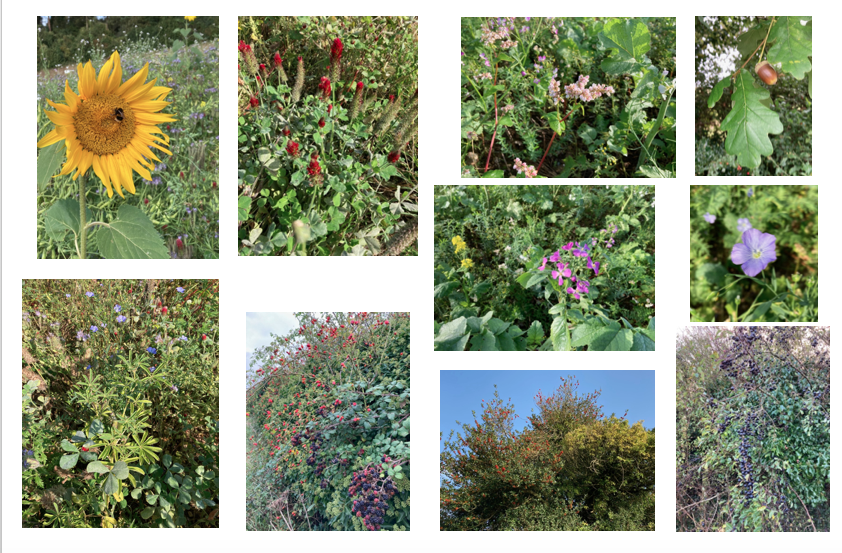
A few weeks ago, as we gently drifted from summer into autumn, the hedgerows and bird food plots were steadily building up what is now a larder filled to bursting, which will sustain over-wintering wildlife for the next 6 months. Late flowering hedge plants like ivy are very popular with bees and butterflies at the tail end of the season, and here I managed to snap a beautiful Comma butterfly, at once bright and colourful, then suddenly almost invisible against the background when it closes its wings. Wonderfully adapted to its environment, I managed to film as it closed its wings, one blink and it’s gone.
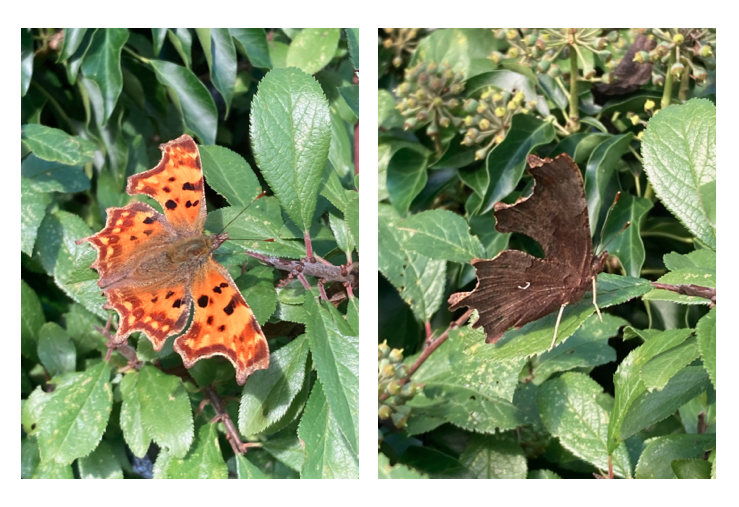
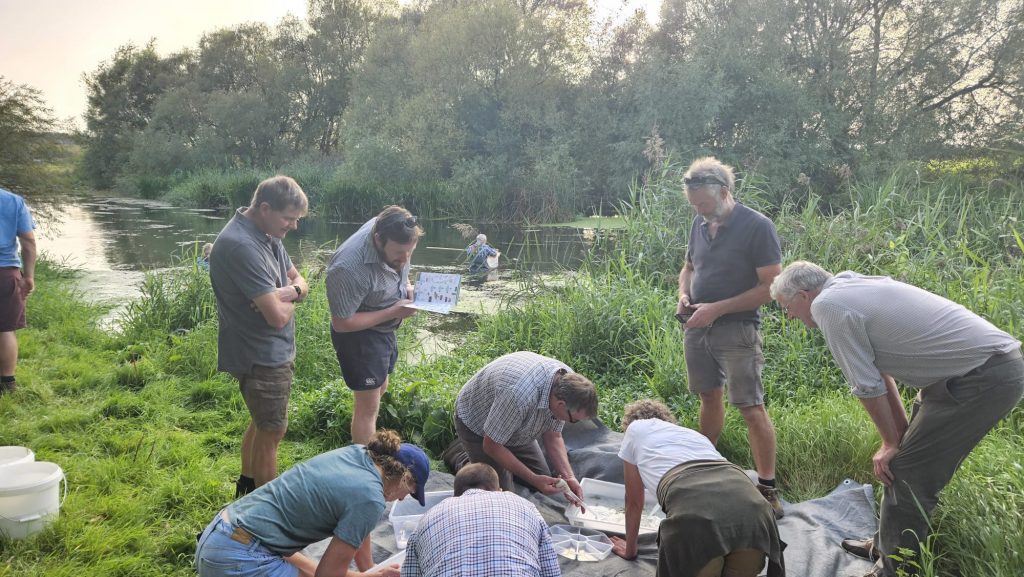
The first of two very popular late summer Farmer Cluster meetings, this one held on the Tory family’s land by the Stour at Shapwick, led by Nicola Hopkins of Dorset FWAG (farming and wildlife advisory group), she had two of us wade into the river with waders and nets to see what we could find on the river bed. We then passed the nets ashore for emptying and sorting, before then spending ages trying to identify what we had found. There was wonderful diversity of species to be found, caddis fly larvae, in their characteristic grit covered duvets, there were damsel fly larvae and even a dragon fly larva, quite a few small fish, as well as snails, water boatmen and quite a few unidentifiable wrigglers. After marvelling at what we found, then being sobered up by what Nicola told us was missing, the river faces many challenges from sewage treatment outflows, and leakage from farmland, we adjourned to the Anchor Inn for refreshments. Plenty of food for thought and exchange of ideas for how to improve the health of the river.
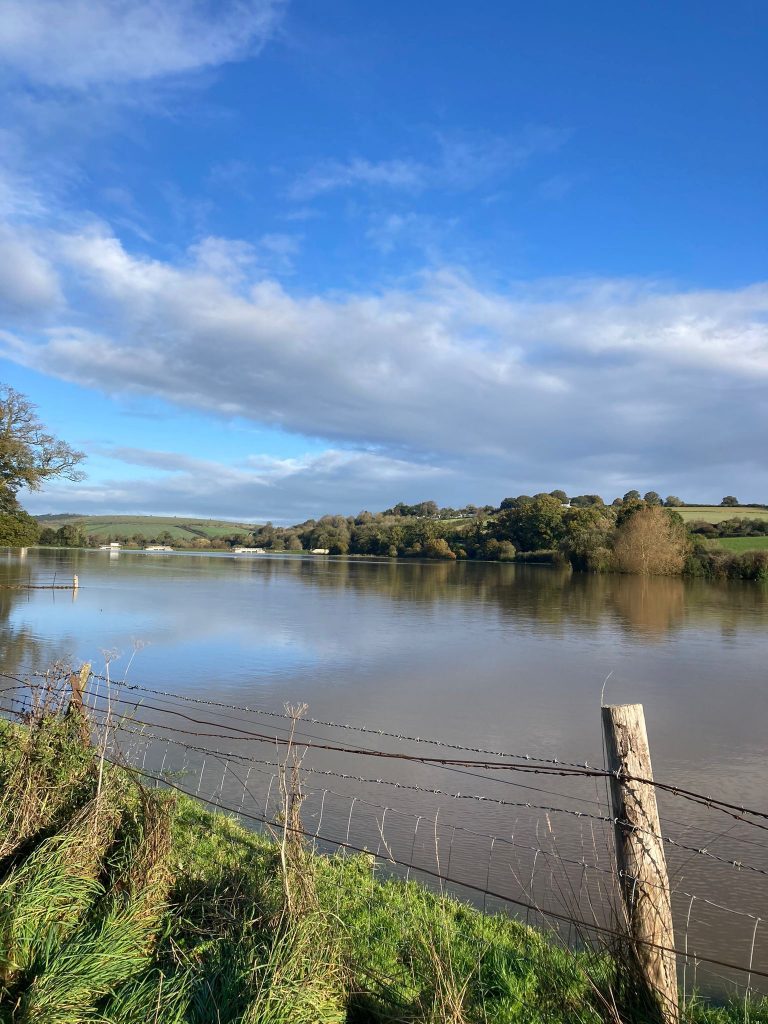
As the Stour burst its banks yesterday, and rather murky brown water spread across our meadows, I was reminded of that delightful evening, and how important it is to prevent soil being carried into rivers, as it buries the grits and gravels which are such important habitats for the creatures we found, and threatens their survival. Not only that, but phosphate is often attached to the soil, which can cause algal blooms and other problems in the water, further challenging aquatic ecosystems.
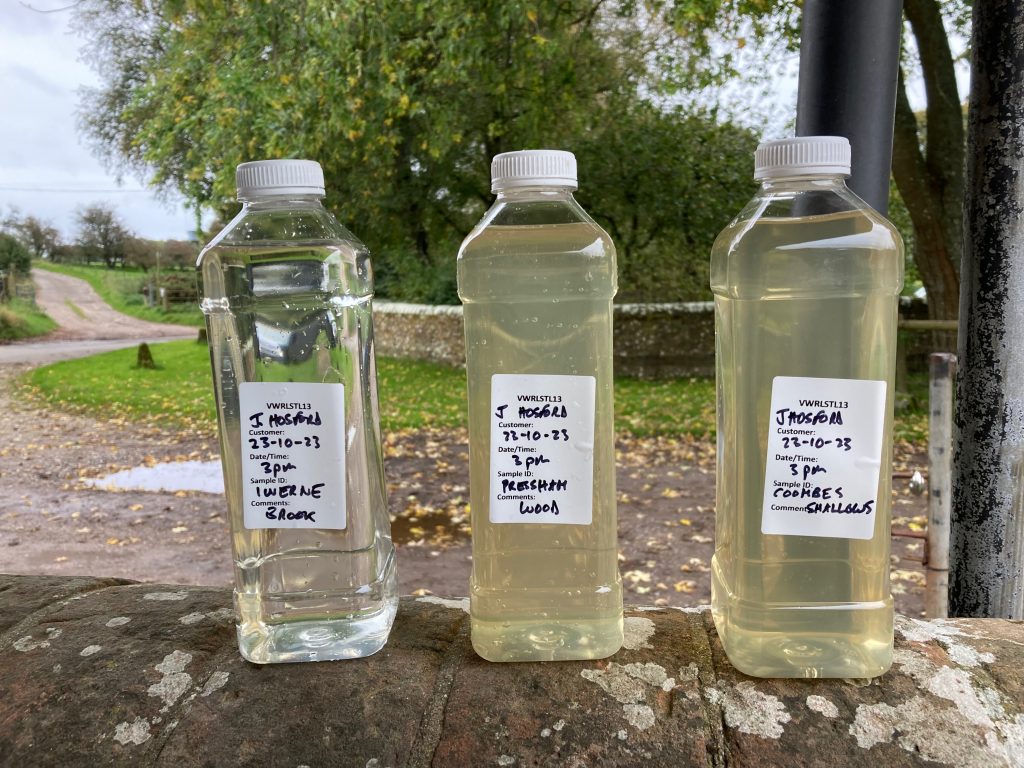
Our cluster group has been carrying out some citizen science over the summer, every couple of weeks a group of us collect water samples from the river and some of its tributaries, then Claire our leader collects them up and sends them for testing. Suspended solids and other contents are quantified, and we look forward to seeing a whole year’s results, hoping we can learn from them. Our own most recent main river samples, taken following a few days of rain, looked pretty awful alongside a still clear bottleful taken from the Iwerne Brook, which flows down to the Stour from the Fontmell Magna and Iwerne minster direction. Identifying where pollution enters the river is surely very tricky. In some cases, country lanes, where impatient drivers squeeze past each other’s vehicles, will be contributors, as tyres rub soil off the bank and into the road, it will only wash one way, downhill, to the nearest river. Everywhere is in a catchment.
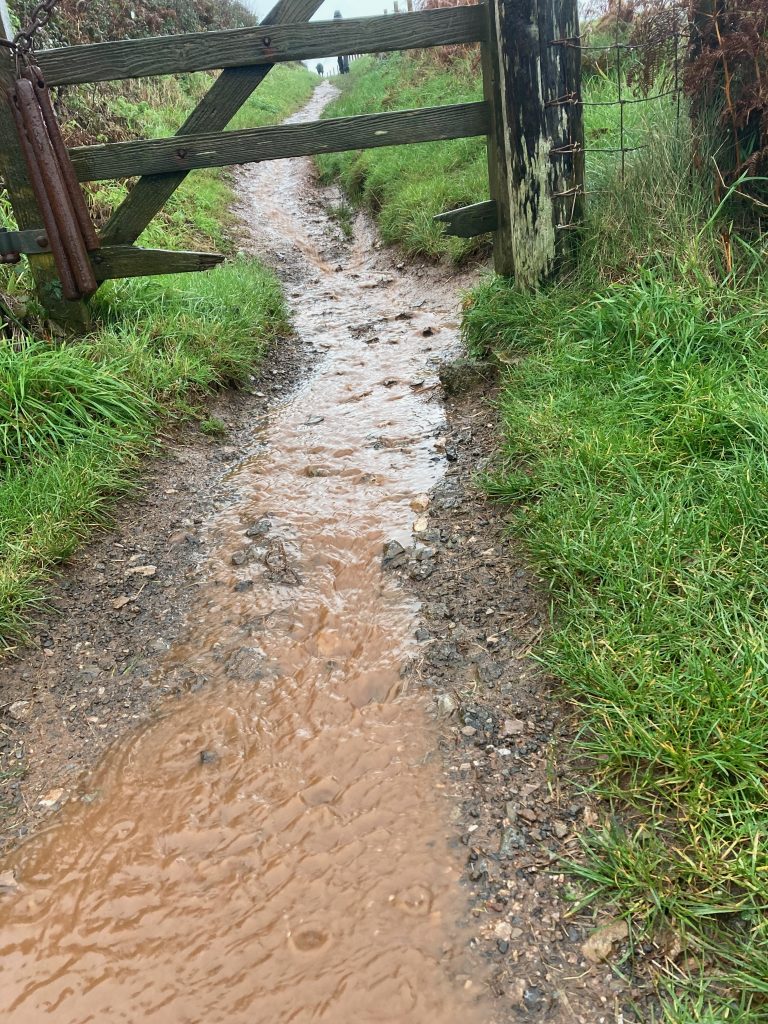
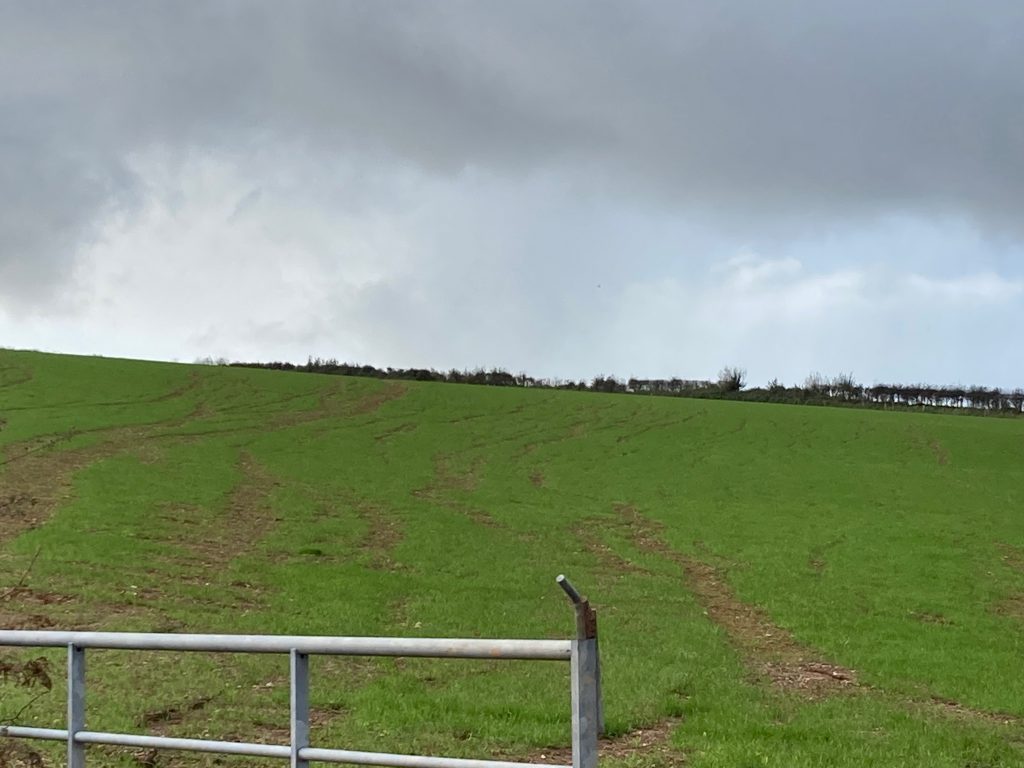
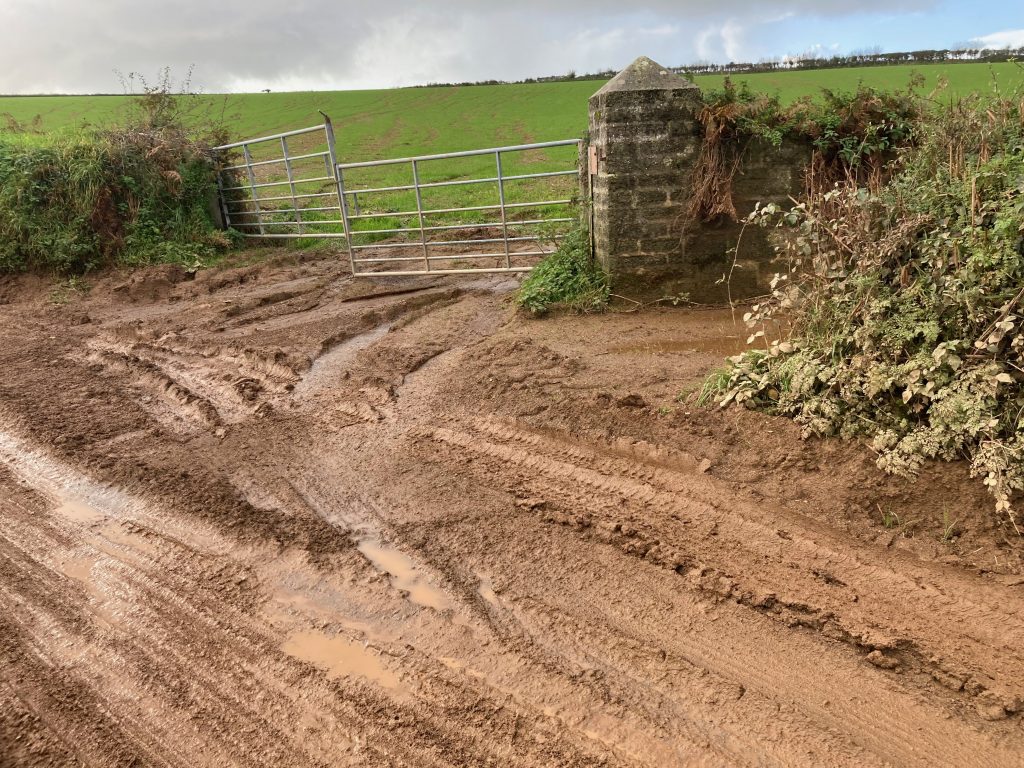
A weekend spent in Devon during the recent wet weather was even wetter than at home, rivers were brimming over, and a few recently sown fields were disgorging their soil into the roads, from where it is but a short trickle to find its way into watercourses. We really need to do better.
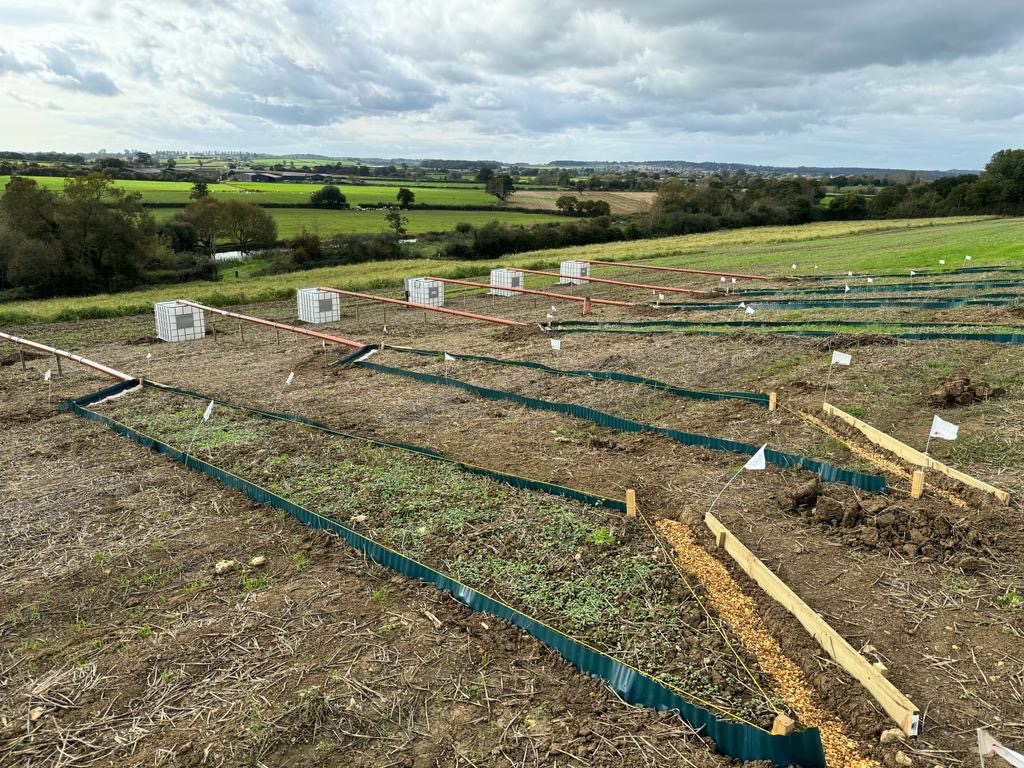
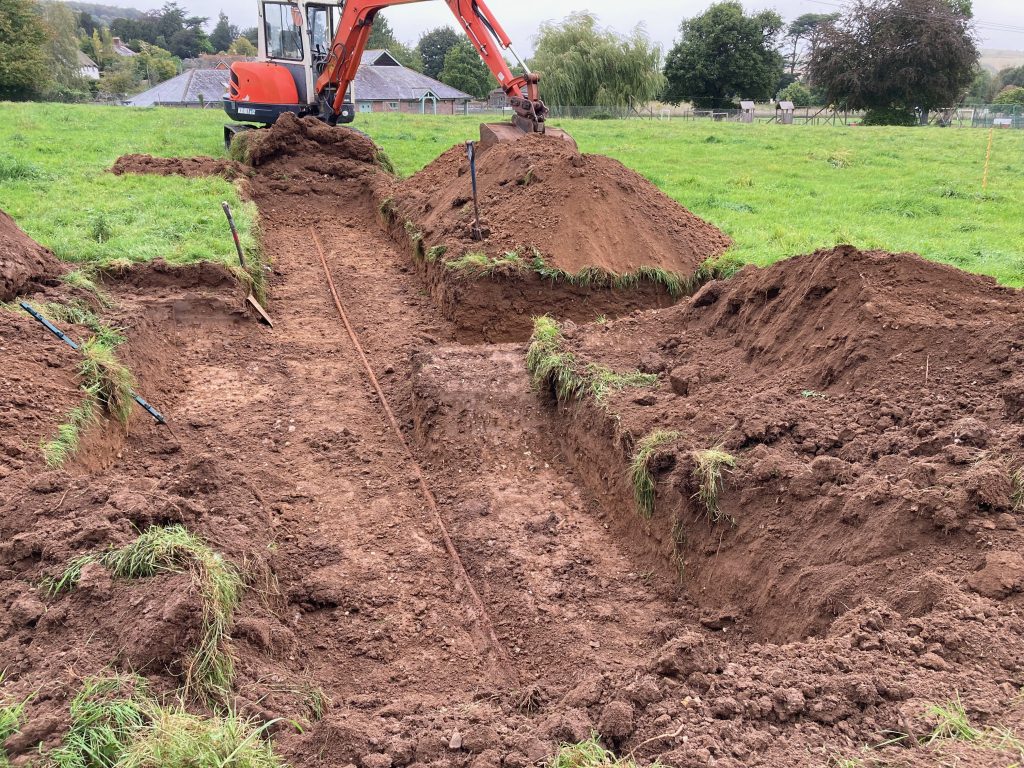
Continuing the watery theme, we recently became aware of high water usage on one our meters, which was becoming rather expensive, so off we went with the digger to try to find the leak and fix it. Numerous holes across the paddock failed to locate a wet patch, even with the help of the newly learnt skill of water dowsing, so in the end it seemed easier to renew approximately 60m of underground pipe. We took the opportunity to install a couple of isolation points in some very handy plastic chambers, much easier to install and make inlet holes in than the traditional concrete sections. Isolation valves will make it easier to find leaks in future, a hazard of flint infested soil, unprotected plastic pipes seems to invite flints to move small distances towards them over a period of several decades, guaranteeing that some mug in the future will have to dig them up again.
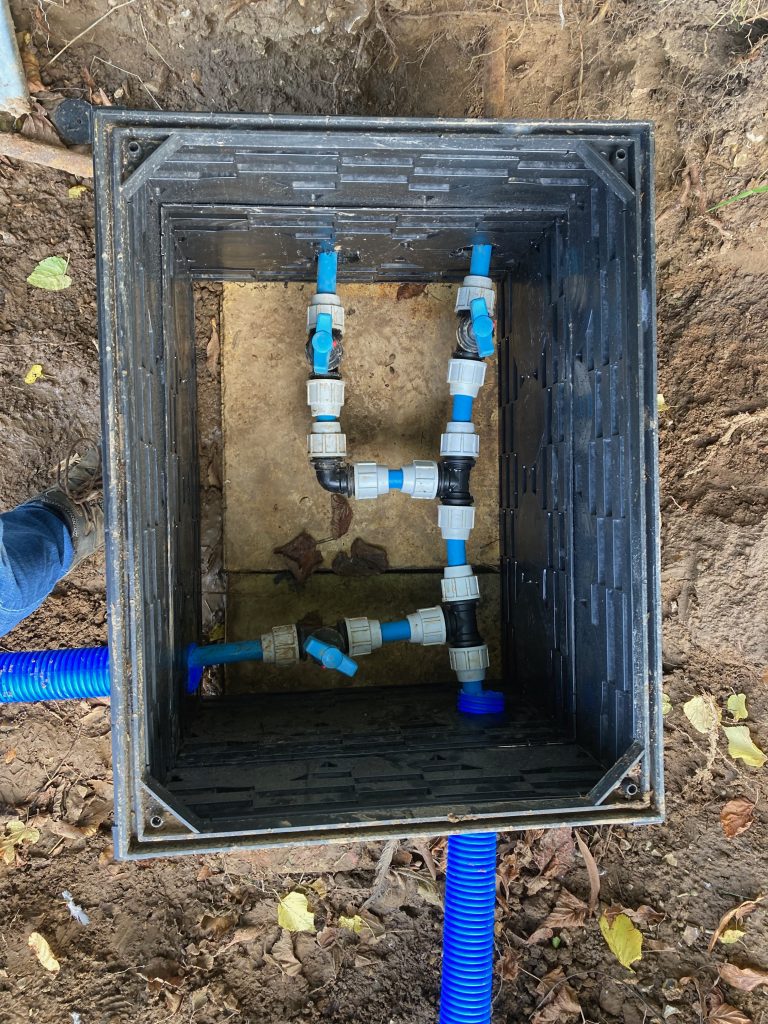
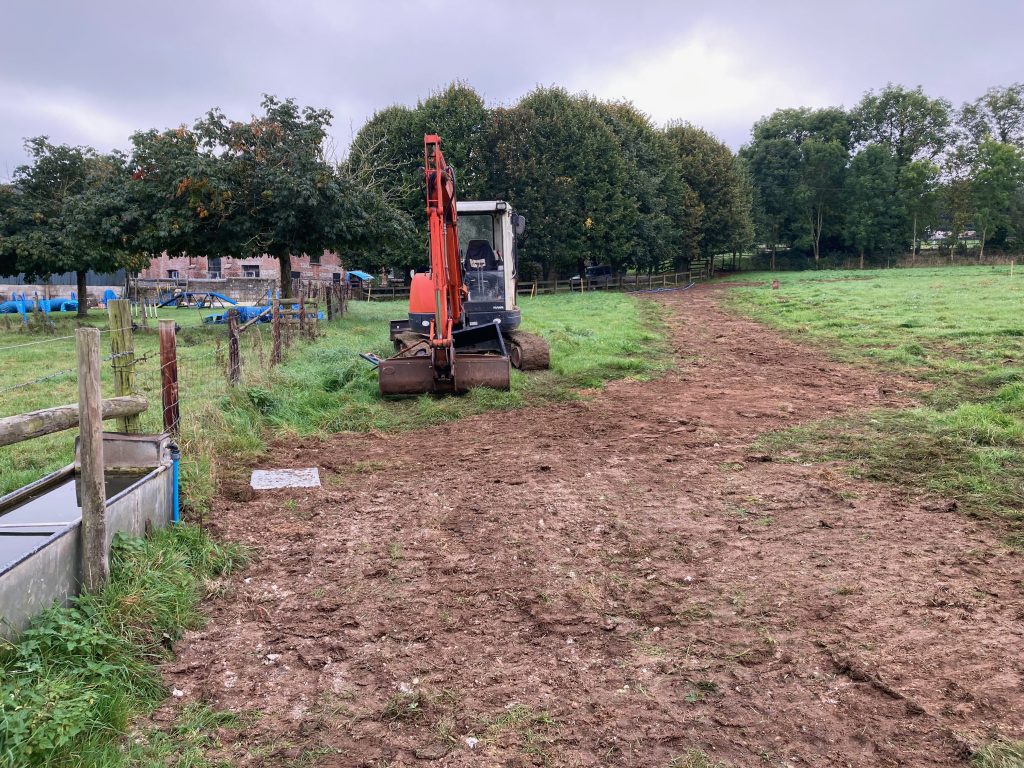
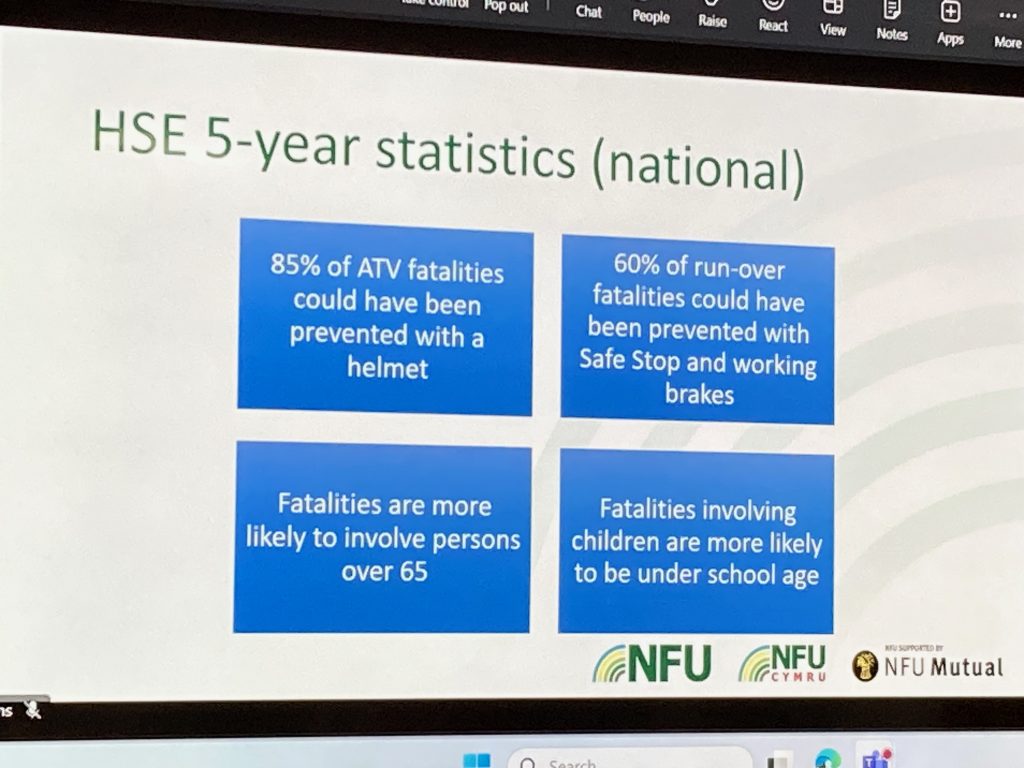
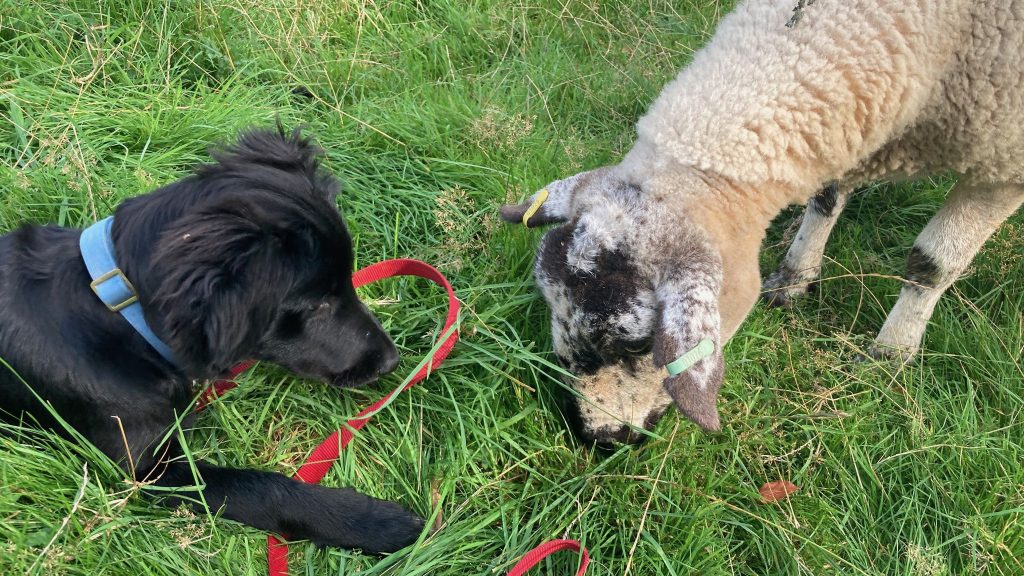
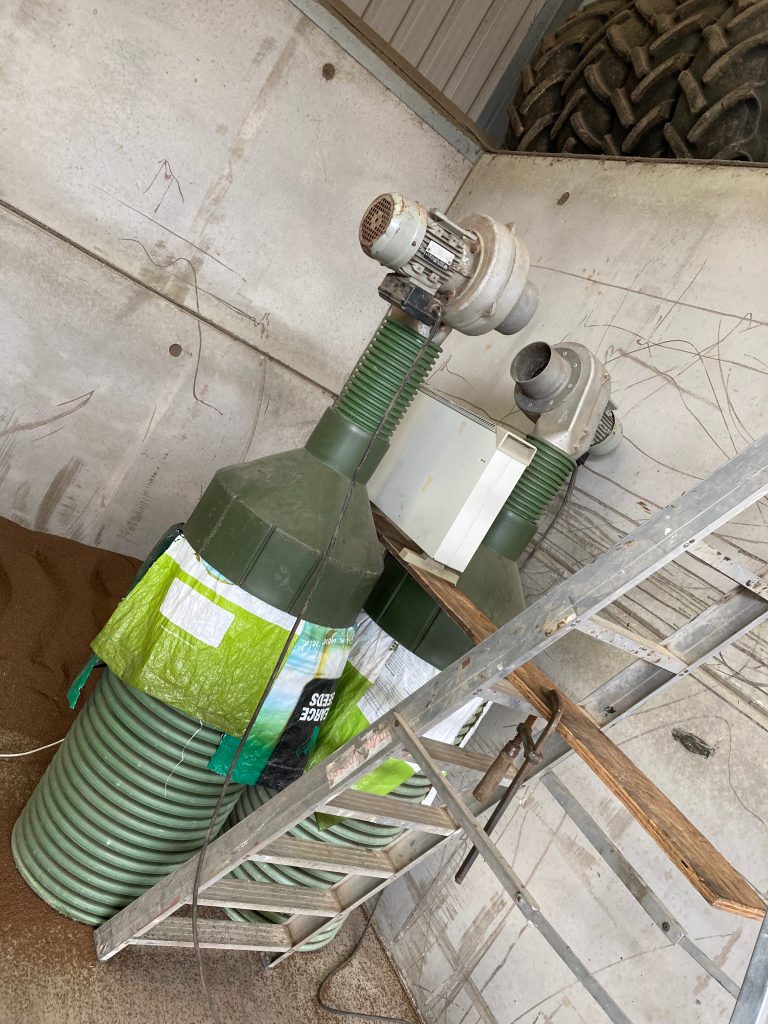
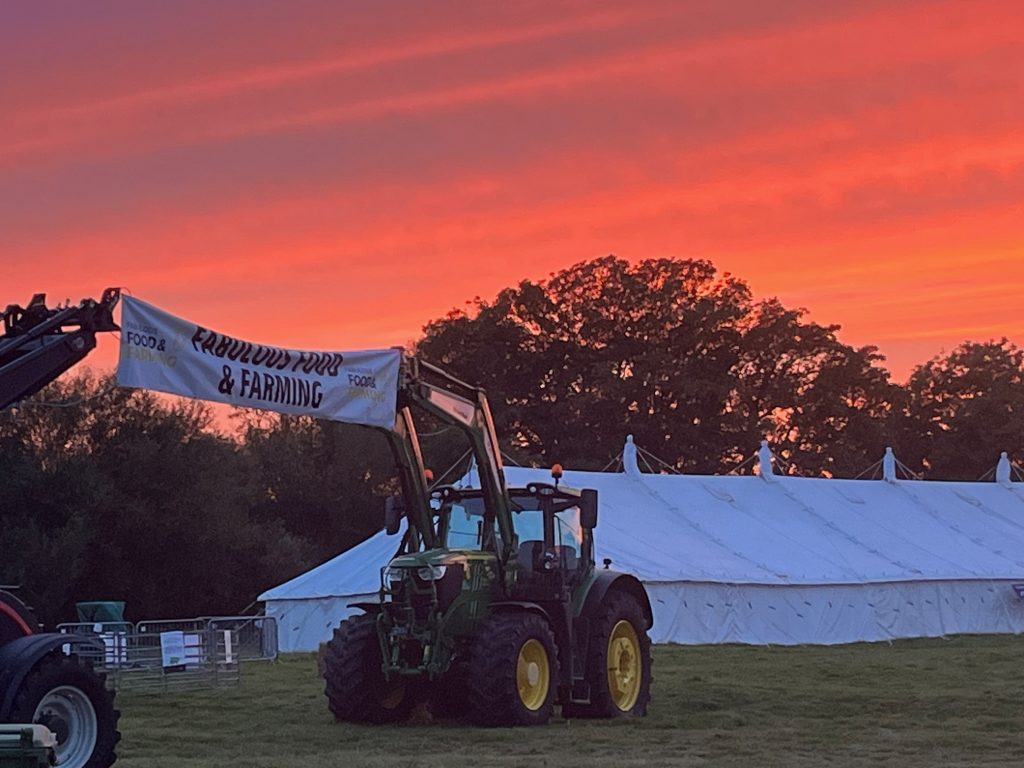
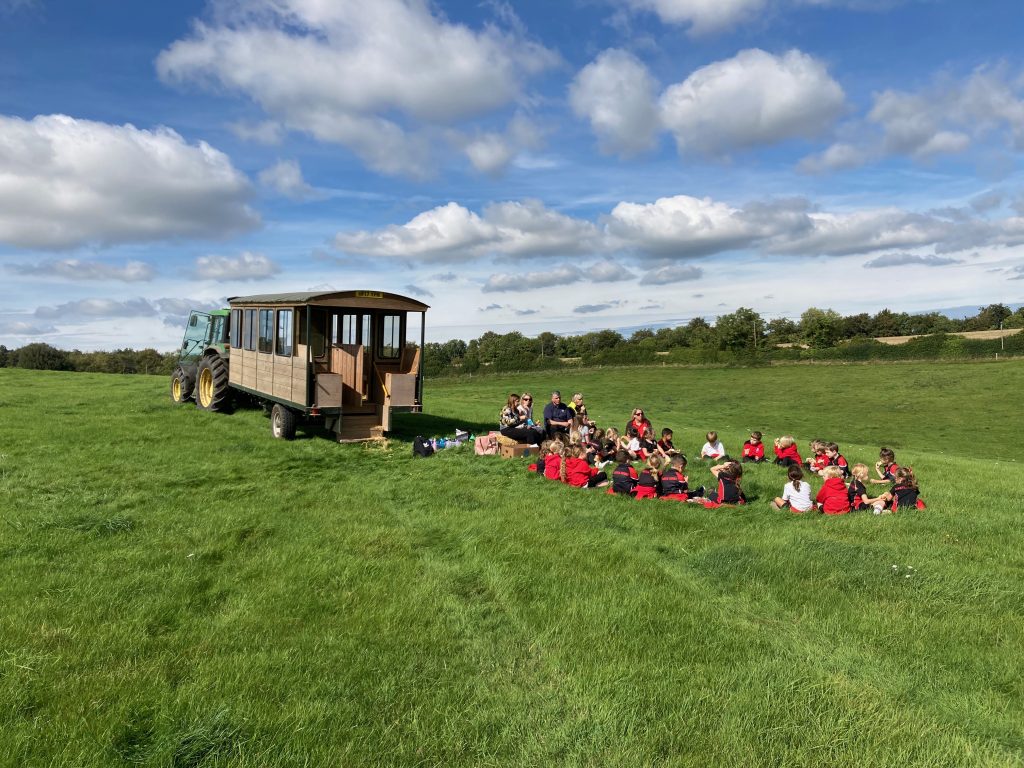
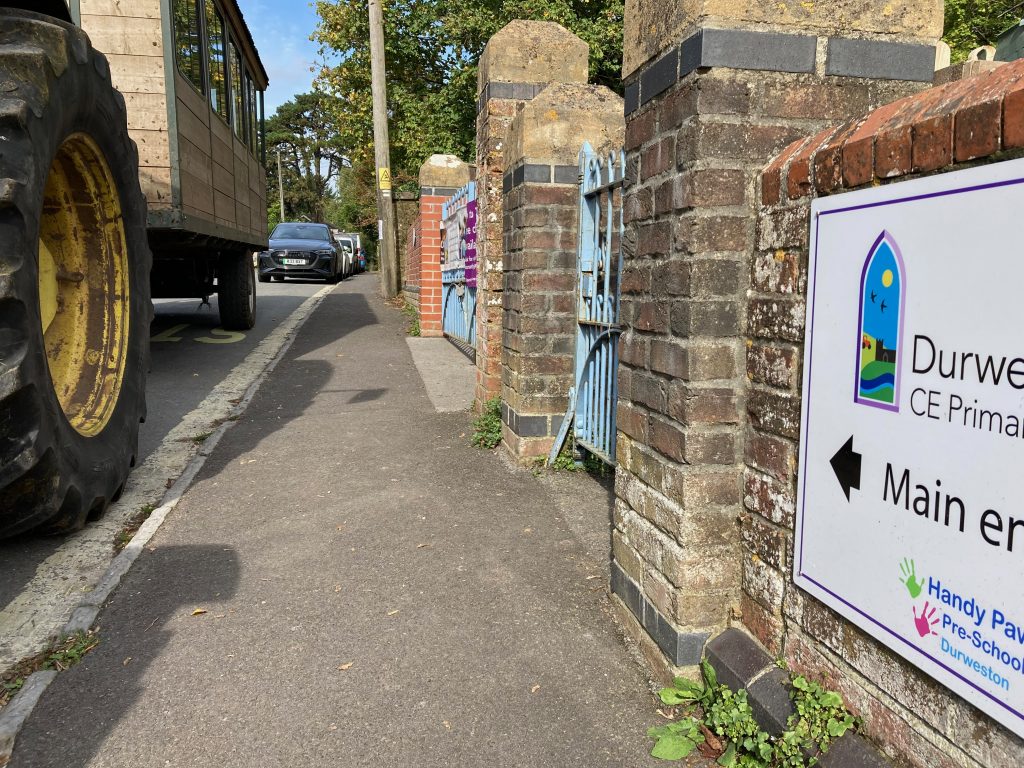

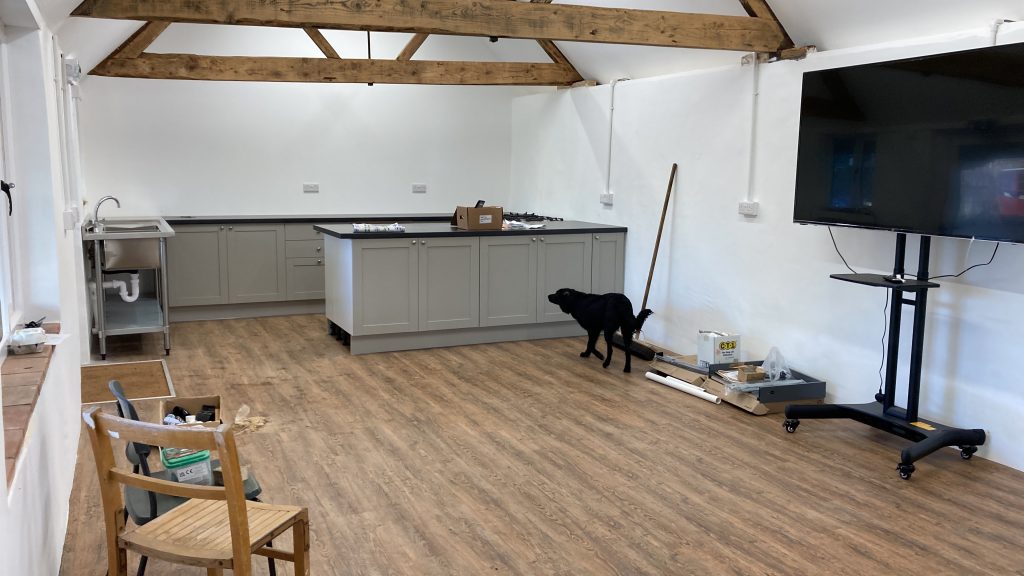
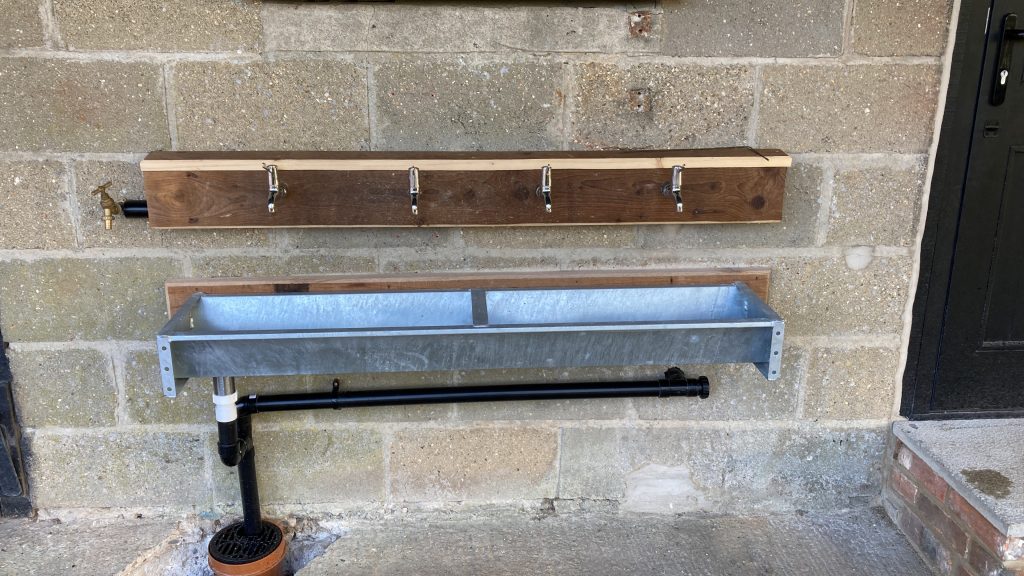


I was very happy to note that your team managed to collect the clear water sample from the River Iwerne. Generally the Iwerne is a pretty clear running. Nevertheless it, too, suffers from the easily seen silt filled run-off. The steep sides of Hod and Hambledon hills being the prime sources of the silt. What is not so obvious, however, are the sudden – albeit relatively short lived – drops and then rises in water level. Both these factors are a result of human activity.
From observation, it seems that the water level changes happen throughout the year. During most of the year the changes will probably have no influence on the wildlife of the Iwerne. During the summer “low flow” period, however, we have seen short(2-3 hour) periods when no water whatsoever flows; just puddles are left.
So the dear old Iwerne does have its problems. If we really can reduce run off and stop interfering with water flow, then we might just get back to the point where we can again find the freshwater mussels and crayfish of 60 years ago.
Here’s hoping.
Dear George,
As usual your blog is inspiring. You never mentioned anything about hedges. I would like to thank you for introducing me to a wonderful group of volunteers from Dorset Climate Action Network (CAN) who are as we speak battling the rain to complete about 80km of hedgerow surveys on our farm. They have been fabulous. If any other farmers read this blog, George provided me with a wonderful introduction of which you may like to take advantage.
Testing the water preemptively is a great idea. I wish we had done this. At the moment I have a request in to Wessex Water to share the testing they have done over a period of many years to a river on our farm. I am still waiting (over a week now) for a response. Doing it yourself has to be a good way forward.